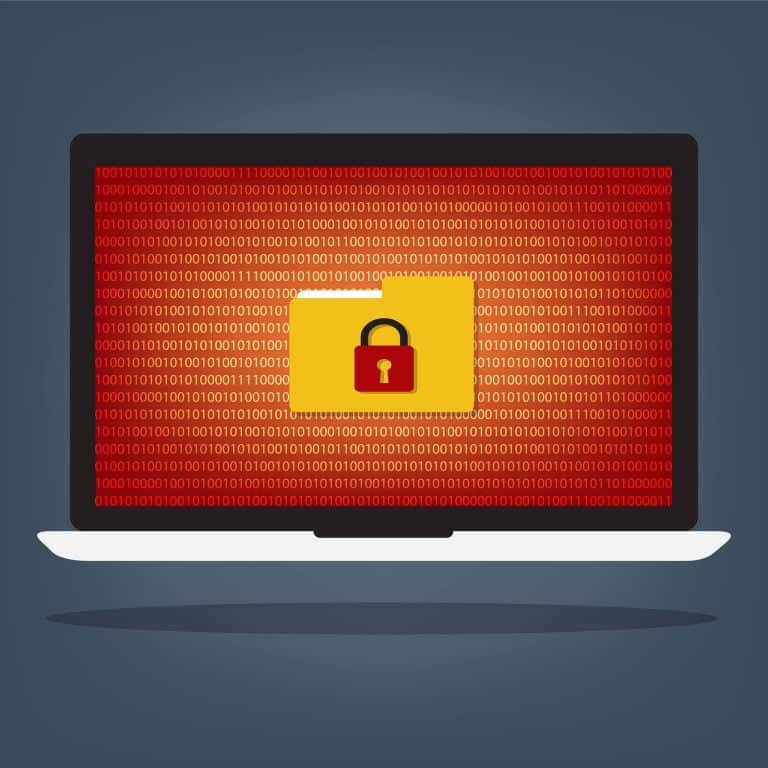Learn how to prepare for a potential cybersecurity breach with a list of things you can do both before and after an unauthorized event.
Table of Contents
ToggleYou might have survived last year’s cyber threats, but that doesn’t mean you’re already immune to future threats. With new security measures, there are also new techniques to hack into a system. Kaspersky reported that there were about 360,000 malware being created every day in 2020.
There are significant losses that the company will face if you don’t take cybersecurity seriously.
As an IT professional, it is one of your duties to ensure that the company is prepared for a cybersecurity breach. You know full well that there are no bulletproof plans to prevent a data breach. But there are things that you can do to reduce those threats and control their damages.
With that in mind, we’ll help you prepare for a potential cybersecurity breach with a list of things you can do. In addition to this, we will also include what you should do after a breach happens.
What is a Cybersecurity Breach?

Any incident that leads to unauthorized access to computer data or networks is referred to as a security breach. And if this happens over the internet, it is a cybersecurity breach. This often results in exposure of information to unauthorized individuals inside or outside of the company.
The latest statistics on cybersecurity suggest that cybersecurity should be a top priority. Companies should be more proactive about their actions rather than reactive.
For instance, attacks on Industrial Control Systems (ICS) are on the rise. This prompted ICS vendors to upgrade the security features of their products. This way, they can assure that the control systems they sell can counter the latest hacking techniques by cybercriminals.
Finding the right ICS provider can help you protect valuable assets. But you should not make the mistake of randomly purchasing security systems. They can be a bit pricey, and you might overlook the places where security is needed the most. That’s why you need to conduct a needs assessment for your company.
Cyberattacks vs. Data Breaches
A cyberattack is the attacker’s attempt to obtain unauthorized access to electronic data held on a computer or network. They do this so that they can:
- Ruin a company’s reputation, or
- Steal sensitive information
Anyone can be a target of cyberattacks – from individuals to groups, to organizations and governments. There are different types of cyberattacks, and every IT personnel should be aware of each of them.
On the other hand, data breaches happen when data, such as company passwords, is accessed without permission. The market for breached data is prevalent on the dark web. It is either sold or exchanged and can be used for other criminal acts such as identity theft.
Usually, a cyberattack comes first before the data is exposed. Whatever the case is, both of these can potentially affect companies. Just last year, a data breach cost companies an average of $4.24 million per incident.
What to Do Before a Cybersecurity Breach Happens?
Everyone in the company should be concerned about cybersecurity. That’s a fact. But IT personnel are one of the main contributors to a safe and secure system.
While it’s true that there are no perfect security systems, that doesn’t mean you should let your guard down. That’s why you should still plan preventive measures to protect the company’s system from a possible data breach.
Below are four things that you can do to prepare for possible cybersecurity attacks.
- Secure Company Network
If you want to protect the company’s system from an attack, you should start installing security software. Anti-malware, antivirus, and anti-ransomware protection are some of the examples that you should consider. It is important to get the right protection for the company.
Different types of companies have different needs.
For example, industrial companies have different connection requirements from marketing companies. Industrial companies have intricate networks with hundreds of interconnected nodes. For this type of connection, the Internet of Things (IoT) is used. This is to allow huge data to flow inside the systems.
The NERC CIP standards require industrial companies to have a network scanner. This is so that they can identify network security vulnerabilities. They can check vulnerabilities such as password strength, open ports, scripts, and operating system controls.
In addition to this, you also have to secure your router. Usually, routers use a default password, which hackers may have already been aware of. That’s why you should change your router’s password to something a cybercriminal is unlikely to learn.
- Ensure that Your Operating System is Updated
Operating systems (OS) that are out of date are more prone to viruses and cyberattacks. This is because hackers have had more time to identify the vulnerabilities on older OS. That’s why you should be aware of the latest operating system version available and install it right away.
An outdated system doesn’t have security features that prevent a ransomware attack from occurring. This type of cyberattack is a serious cybersecurity attack that you should be on the lookout for.
As an example, WannaCry failed to update its Windows operating system last 2017. Their outdated operating system risked infecting 67% of their computer systems with ransomware.
Windows have released updates on data security right after they detected a data breach. Despite this, users continue to use older operating systems, which leaves them susceptible to cyberattacks.
- Keep Your Security and Software Patches Updated
All IT professionals know that security and software patches must be kept up to date regularly. You should install patches when they become available. When applications aren’t patched and updated regularly, your network becomes susceptible to cyberattacks.
Because the system is outdated, cybercriminals can easily penetrate the security system. What they do is that they write up the code and target this vulnerability.
When you successfully update your system and software, the new security patch will help close any of these vulnerabilities. In return, cybercriminals will have a hard time targeting your network.
If you’re familiar with the Equifax data breach last 2017, then you know that the data breach cost them $700 million. The breach was caused by a software vulnerability in their web application. What happened was that a software update was long overdue. This provided an opportunity for cybercriminals to hack into the system and risk data exposure.
Baseline Security Analyzer is a tool that was recently added by Microsoft. This tool can help you check whether all of your apps are patched and updated regularly. This is a relatively simple and cost-effective approach to secure your network and prevent a data breach.
- Make Sure You Have a Secured Data Storage
Not only should you store data in a secured location, but you should also keep it protected during transmission. Use strong and effective cryptography to keep your data safe for both of these processes. When choosing cryptography to use, you should be aware of what type of information the company stores, and how it is collected.
The nature of your business should be the basis of the encryption you use. There are options such as Transport Layer Security/Secure Socket Layer (TLS/SSL) encryption, or an iterative cryptographic hash.
Several businesses have unintentionally exposed themselves to cyberattacks. And they might have avoided this if their SSL installations had been correctly set up.
That’s why you should be familiar with how the company handles sensitive data. In addition to this, you should also be aware of how to assess what encryption is acceptable in each situation.
Keep in mind that there are previously established standards that you can apply. This includes widely accepted encryption methods. It’s not necessary to start from scratch. Sometimes, employing a tried-and-proven-effective method is the best way to do things.
What to do After a Cybersecurity Breach Happens?
Having knowledge about possible data breaches does not guarantee that you know when they may occur. There are different cyberattacks, and they differ from what type of information may be stolen. The way you respond and recover will depend on the situation.
Cybercriminals target anyone and everyone. That’s why you should know what to do when a security breach occurs. Luckily, we can help you protect the company with these 4 steps.
- Preserve Evidence
When a security breach occurs, you should stop yourself from deleting everything. You must preserve the evidence to know how the breach occurred and who was involved.
After a breach, the first thing you should do is figure out which servers have been hacked. Next is you need to isolate them as fast as possible so that they will not infect other servers or devices.
- Assess the Source and Extent of the Breach
The next thing that you should do is to determine the source and extent of the breach. This way, you can respond to it quickly and reduce further damages. Intrusion detection and/or preventing systems (IDS and IPS) should ideally be in place. This will automatically log security breaches for you.
You can use these logs to find out the source of the breach and what the hackers did to penetrate the security system. Without an IDS/IPS system, it will take you more time and effort to gather data.
- Strengthen Your Password
One of the easiest ways to prevent anyone from accessing your account is to change your password. Changing your password regularly will help protect your system from potential hackers in the future.
The reason for this is that the majority of data breaches are mass data breaches. This means that hackers gain access to thousands of accounts at once instead of individually targeted data breaches.
Not only should you change passwords regularly, but you should create a strong password. The National Cyber Security Center (NCSC) laid out some guidelines on how you update your password. While the company should not entirely rely on passwords for security, you should have a good one.
Lastly, you should avoid reusing your old passwords. There are obvious risks if you do exactly that, one of which includes another security breach. As the saying goes, you don’t want to make the same mistake twice.
Conclusion
Anyone who uses the internet should be concerned about cybersecurity. Companies are not an exception. Whether you’re a big or a small company, you should always be on the lookout for any cybersecurity attacks and data breaches. It’s always good to take the necessary precautions to protect yourself.
We have discussed some of the steps you should take before and after a cybersecurity breach. Keep in mind that security begins with you. So, to remain safe, educate yourself about everything cybersecurity-related.




